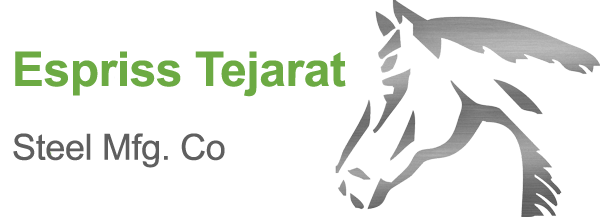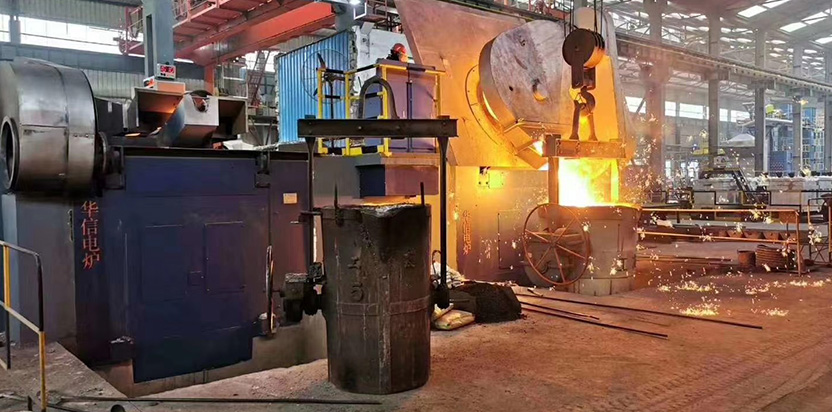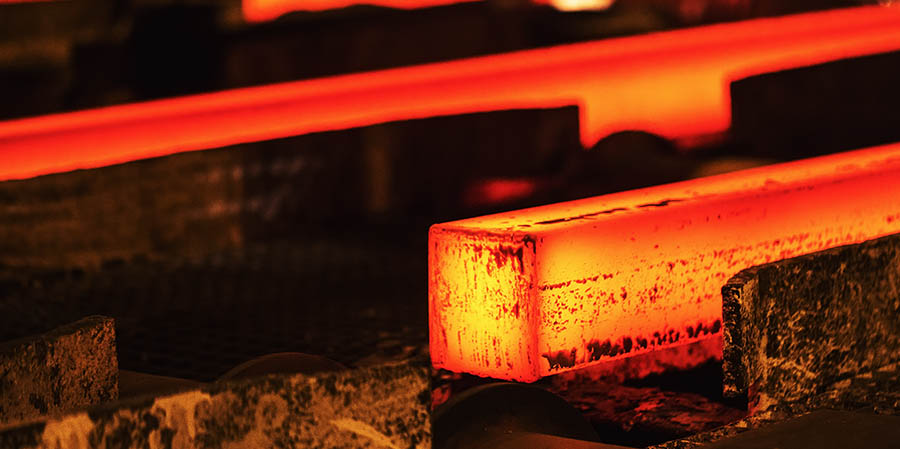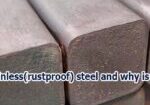What is an induction melting furnace?
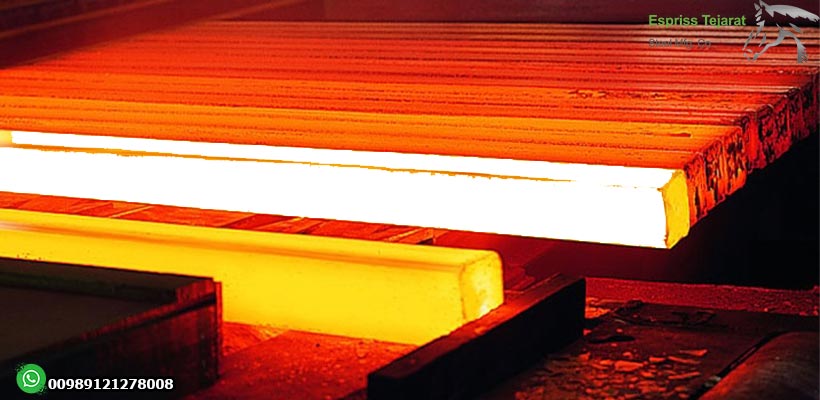
Induction furnaces are a group of electric furnaces that use a magnetic field and an electric current to melt metals. Induction melting In induction furnaces, the capacity is very variable and can be made and used from small and home furnaces with a capacity of one kilogram to one hundred tons. Induction furnaces are used to melt various types of metals such as iron, steel, copper, aluminum and precious metals such as gold. This device works by induction heating method. Induction heating: A method of heating electrically conductive materials (usually metals) electromagnetically. In induction heating, changes in the magnetic flux of alternating current at a frequency of hundreds of kHz induce an electric current in a metal electrical conductor, which is a vortex current (a process similar to that of a transformer). Secondary induction heating acts as a short circuit. In fact, the secondary is the metal that acts as a short circuit and must be heated. Vortex currents in metals cause high electrical losses, resulting in high heat generation. The higher the AC frequency, the higher the eddy current and the heat generated. Also, the higher the ferromagnetic properties of the material in which the electromagnetic induction is performed, the higher the heating rate. Induction furnaces in comparison with fossil fuel furnaces have many advantages such as greater accuracy, cleanliness and less heat loss and …. In different furnaces that use other non-induction methods, the size of the furnace is very large and it takes a long time to start and turn off. The passage of current through a coil and the use of a magnetic field to generate current in the core of the coil form the basis of induction furnaces. These furnaces use heat generated by Foucault losses and metal melting hysteresis or heat treatment. The first induction furnace to be operated was powered by the main power grid and no frequency conversion took place. Given that the frequency of feeding makes it possible to increase it and achieve this goal. Although the frequency can be increased to some extent with these sources, but the frequency limitation and the inability to change it, and finally the incompatibility of the power supply system with the furnace, were the two main disadvantages of these systems. Due to these disadvantages, the entry of semiconductor elements into the industry caused static power supplies to replace the previous sources. Induction furnace for…
Induction furnaces are a group of electric furnaces that use a magnetic field and an electric current to melt metals.
Induction melting
In induction furnaces, the capacity is very variable and can be made and used from small and home furnaces with a capacity of one kilogram to one hundred tons. Induction furnaces are used to melt various types of metals such as iron, steel, copper, aluminum and precious metals such as gold.
This device works by induction heating method.
Induction heating: A method of heating electrically conductive materials (usually metals) electromagnetically.
In induction heating, changes in the magnetic flux of alternating current at a frequency of hundreds of kHz induce an electric current in a metal electrical conductor, which is a vortex current (a process similar to that of a transformer).
Secondary induction heating acts as a short circuit. In fact, the secondary is the metal that acts as a short circuit and must be heated.
Vortex currents in metals cause high electrical losses, resulting in high heat generation. The higher the AC frequency, the higher the eddy current and the heat generated. Also, the higher the ferromagnetic properties of the material in which the electromagnetic induction is performed, the higher the heating rate.
Induction furnaces in comparison with fossil fuel furnaces have many advantages such as greater accuracy, cleanliness and less heat loss and …. In different furnaces that use other non-induction methods, the size of the furnace is very large and it takes a long time to start and turn off.
The passage of current through a coil and the use of a magnetic field to generate current in the core of the coil form the basis of induction furnaces. These furnaces use heat generated by Foucault losses and metal melting hysteresis or heat treatment.
The first induction furnace to be operated was powered by the main power grid and no frequency conversion took place. Given that the frequency of feeding makes it possible to increase it and achieve this goal. Although the frequency can be increased to some extent with these sources, but the frequency limitation and the inability to change it, and finally the incompatibility of the power supply system with the furnace, were the two main disadvantages of these systems.
Due to these disadvantages, the entry of semiconductor elements into the industry caused static power supplies to replace the previous sources.
Induction furnace for sale
The price of different types of melting furnaces in the market can be obtained by searching different sites, different types of melting furnaces have different prices depending on the type of fuel and their advanced type.
Steel melting furnace or induction furnace is a furnace that can melt all kinds of metals such as steel, aluminum and ،, first class induction furnace can be obtained by visiting the sites and consulting experts in this type of product.
The selling price of steel melting furnace or induction furnace that is used for melting steel is available to buyers on the sites of different factories.
Induction furnaces, unlike other types of furnaces, are electric and work with electric current.
Vacuum induction melting furnace
The vacuum induction melting process is widely used for a variety of alloys, especially superalloys, due to its advantages such as the removal of undesirable minor elements with high vapor pressure and the prevention of reduction of the main alloying elements.
Also under this process oxygen and nitrogen are significantly reduced. A magnetic field is created by passing current through the copper coils around the plant. This magnetic field produces a current in the charge materials inside the plant, causing them to heat up, and when the charge materials are heated and melted enough, they are turbulent and mixed by the magnetic field.
The vacuum induction melting process is one of the common methods in secondary metallurgy that is used to produce clean alloys with precise chemical quality and high purity.
The first VIM furnace was built in 1920 by Rohn with a capacity of 300 kg and a torr5-2 vacuum for melting nickel-chromium alloys.
In 1926, 40 ton VIM furnaces were built. The need for strong alloys in World War II led to the rapid growth of this technology. Today, these furnaces have a melting capacity of up to 100 tons, and newer devices also have better automation and control.
There are different designs of VIM depending on the application. These furnaces are generally made in single and double chamber types. The capacity of these furnaces varies from a few kilograms for laboratory applications to 3 tons for industrial use.
In vacuum induction melting method, the reaction of active alloy elements with the atmosphere is minimized, it is possible to precisely control the chemical composition and achieve high purity. This process is mainly used to produce superalloys and clean steels and some non-ferrous metals and active alloys.
Classification of induction furnaces
1- Induction furnaces are divided into three categories in terms of frequency for its power
- First category: frequency 50 to 300 Hz
- This handle is an induction furnace to keep the metal warm and does not have the ability to melt metals
- Second category: frequency 300 to 10,000 Hz
- Most induction furnace circuits are in this category and have the ability to fry and soften metals
- Third category: frequency 10,000 to 10 MHz and even higher
- Induction furnaces in this category are used for melting and are used in industry
2- Induction furnaces are divided into three parts in terms of flow:
- First category: 10 to 85 amps
- (Used for normal consumption)
- Second category: 85 to 500 amps
- (Used for industrial consumption)
- Third category: 500 to 1000 amps or even higher
- (Used for strong industrial consumption)
3- Induction furnaces in terms of metal weight inside the page wire
- First category: 1 gram to 500 grams
- (Used for lightweight applications such as gold smelting and))
- Second category: 500 g to 5 kg
- (Used for common uses and general modules)
- Third category: 5 kg to 50 kg
- (Used for semi-industrial consumption)
- Fourth category: 50 kg to 500 kg
- (Used for industrial consumption and high amount)
- The fifth category is 500 kg to several tons
- (Used for industrial and super high consumption such as metal companies and))
Advantages and disadvantages of induction furnaces
Advantages of induction furnace:
- It has no electrode and electric arc, which allows the production of steel, low-carbon alloys and trapped gases without quality problems.
- Low melting losses and alloying elements.
- High efficiency, therefore, is cost-effective.
- Precise control of operational parameters.
Disadvantages of induction furnace:
- Refining in an induction furnace is not as compact and efficient as an electric arc furnace.
- The life of refractory coating is short compared to electric arc furnace.
- Removal of sulfur and phosphorus is limited, so selecting a charge with less impurities is required.
